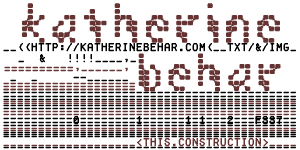Description
INimaging is a live performance and technology installation that imagines Life inside Photoshop. Three wandering geometric 3D polyhedrons roll slowly around a room, each inhabited by a lumpy yogi whose fleshy contortions move the shape. Based on Bit, a character from the 1982 Disney movie Tron, the shapes represent 'Yes,' 'No,' and a mysterious 'Maybe' that seems to violate binary logic. The polyhedrons are motion-tracked to "operate" a digital imaging process. Two act as Photoshop brushes, "drawing" and "erasing" an architectural image of the performance space, which the third overwrites with chaotic, digital noise. Small windows in the shapes offer an invitation for people to look inside.
Statement
In Tron, the character Bit exists by default neither as a 'Yes' nor a 'No,' but as a blue, confoundingly non-binary probability cloud, riddled with incalculable 'Maybe.' To be properly positive or negative, that is, to become a known quantity, Bit has to undergo a transformation that will deliver it out of its in-between limbo and into computable legibility.
In yoga, strenuously manipulating the physical body leads to meta-physical, spiritual effects. The same holds true for art: just when a material is asked to stretch beyond its physical capacity, something that transcends materiality is produced — the unexpected pleasure of meaning. In considering digital effects, we too often forget that transformations of the virtual kind also result from manipulating substance. Virtual effects, like those produced "in imaging" processes, depend on funneling variable frequencies into discreet, digital states. It is an ongoing and laborious project to measure and regulate material quanities of electrical current. A Bit has to sweat to make a computer work.










